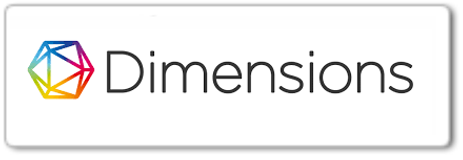SPEECH ACT ANALYSIS ON FACEBOOK CHATS
DOI:
https://doi.org/10.34125/jkps.v9i2.456Keywords:
Bahasa Facebook, Obrolan Facebook, AplikasiAbstract
This study focuses on speech act on facebook chat. The purposes of this study are to identify the types of speech act and describe the functions of each type of the speech act on facebook chat. This study employed descriptive qualitative research in which the researcher uses observation and documentation and methods to collect data. The data of this research is written utterances on Facebook chats. The results of this study show that from 90 data the researcher finds five types of speech act. There are 20 data or 22% from representatives, 18 data or 20% from directives, 15 data or 17% from commissives, 26 data or 29% from expressive, and 11 data or 12% from declarations. Each type of speech act on Facebook chat has its function. Representatives act have functions describing, asserting, and informing; directives act has functions commanding, requesting, inviting, forbidding, suggesting; commissives act have functions promising, threatening, offering; expressives act have functions thanking, apologizing, welcoming, and congratulating; and declarations act have function declaring.
References
Austin, J. L. (1962). How to do things with words. 2nd Edition. In Jo Urmson and Marina Shisa (Ed.), Cambridge, Massachusetts: Harvard University Press.
Crystal, D. (2000). An Encycopedic Dictionary of Language and Languages. London: penguin books.
Fraser, B. (2010). Pragmatics Competence: The Case of Hedging: Emerald Group Publishing Limited
Iskandar, M. Y., Bentri, A., Hendri, N., Engkizar, E., & Efendi, E. (2023). Integrasi Multimedia Interaktif Berbasis Android dalam Pembelajaran Agama Islam di Sekolah Dasar. Jurnal Obsesi: Jurnal Pendidikan Anak Usia Dini, 7(4), 4575-4584.
Levinson, S. C. (1983). Pragmatics. Cambridge: Cambridge University Press.
Peccei, J. S. (1999). Pragmatics. London: Routledge
Sujarwo, Sukmawati, Akhiruddin, Ridwan, & Suharti Siradjuddin. (2020). An Analysis of University Students’ Perspective On Online Learning in The Midst of Covid-19 Pandemic. Jurnal Pendidikan Dan Pengajaran 53(2):125. https://doi.org/10.23887/jpp.v53i2.24964.
Suyitno, Imam, Wevi Lutfitasari, & Heni Dwi Arista. (2021). Teachers Speech to Stimulate Students in Learning Interaction. RETORIKA: Jurnal Bahasa, Sastra Dan Pengajarannya 14(1):69–8. https://doi.org/10.26858/retorika.v14i1.19055
Tursunovich, Rustamov Ilkhom. (2022). The Significance of Pragmatic Appropriateness in Esl Culture. Pp. 157–60 in Proceedings of International Scientific Conference on Multidisciplinary Studies Hosted online from Moscow, Russia.
Wahana, Desi, M. R. Nababan, & Riyadi Santosa. (2019). Translation Techniques of Expressive Speech Acts on Anger Speech Events in Flawless. International Jounrnal of Linguistic, Literature, and Translation (IJLLT) 2(5):118–31. https://doi.org/10.32996/ijllt.2019.2.5.14
Yu, Carol, Dennis Tay, Ying Jin, & Xinhua Yuan. (2023). Speech Acts and the Communicative Functions of Emojis in LIHKG Online Discussion Forum amid COVID-19. Frontiers in Psychology 14(July):1–14. https://doi.org/10.3389/fpsyg.2023.1207302
Downloads
Published
How to Cite
Issue
Section
License
Copyright (c) 2024 Jurnal Kepemimpinan dan Pengurusan Sekolah

This work is licensed under a Creative Commons Attribution-ShareAlike 4.0 International License.














